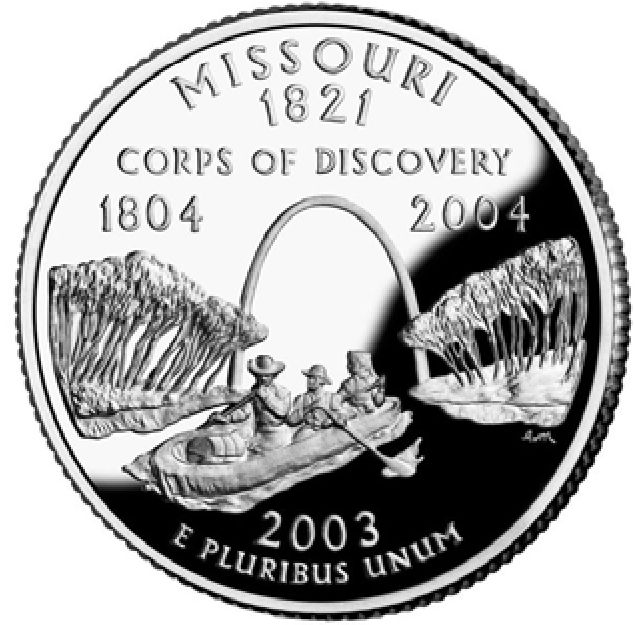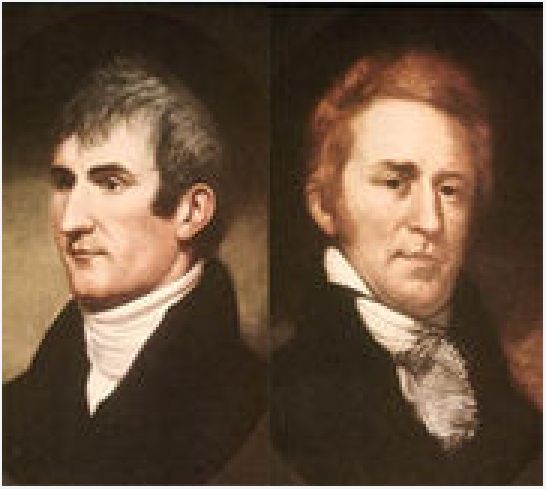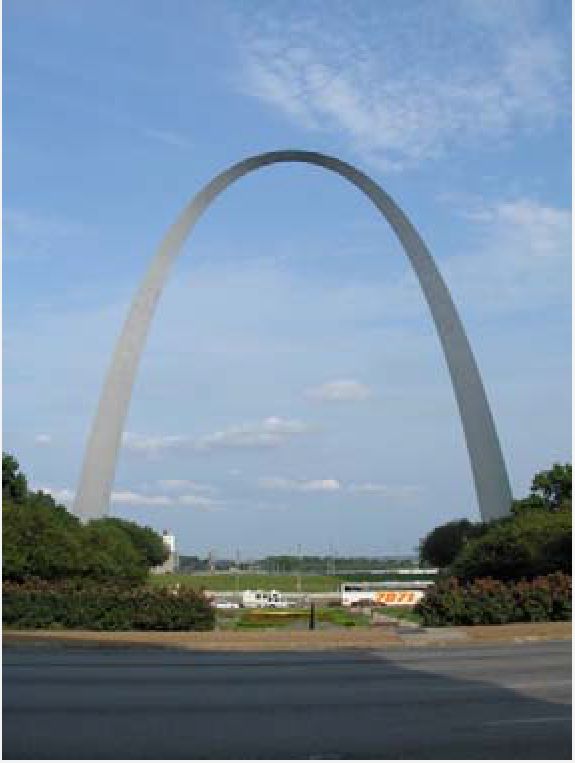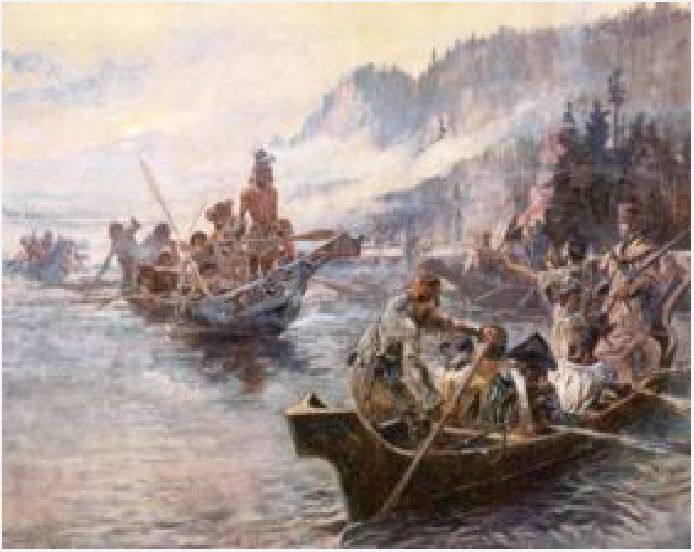US Quarter 2003 Missouri State coin value
The image of this coin is simply an example of US Quarter 2003 Missouri State type coinage.
Cost approximate and valid for common coin only (without rare varieties).
I do not buy or sell coins - this is just a catalog.
Currency - Dollar=100 cents
Face value: Quarter dollar ($1/4=25 cents)
Type - commemorative coin 50 States Quarters Series
Composition - copper-nickel clad copper
Diameter - 24.3 mm
Weight - 5.67 grams
Edge: Reeded
Mint Mark: D (Denver), P (Philadelphia)

Years of mintage:
2003
Reverse:
Gateway Arch, Lewis and Clark and York returning down Missouri River
Legend:
MISSOURY 1821 / CORPS OF DISCOVERY 1804 2004 / 2003 E PLURIBUS UNUM
Obverse:
Washington facing left
Legend:
QUARTER DOLLAR / UNITED STATES OF AMERICA / LIBERTY / IN GOD WE TRUST
Krause catalog number - KM#346
Coin value in condition:
UNC (Uncirculated - without traces of circulation) - ~1 USD.00
XF (Extremely Fine) - 0.25-0.50
Worse than "XF" - 0.25 USD
MISSOURI #24
Capital: Jefferson City.Adhered to: August 10, 1821.
Population: 5,800,310 inhabitants.
Origin of the name: It is named after the river that crosses it, the Missouri River, named after the native Indians.
Reverse depicts explorers Lewis and Clark returning from St. Louis downriver, in the background the tribute arch from where they departed "Gateway Arch" at the Jefferson Memorial.
The legend of "CORPS OF DISCOVERY" "Corps of Explorers" and above the date of entry into La Unión.
 KM#(D):346KM#(S):346a
KM#(D):346KM#(S):346aThomas Jefferson became president (1801) and bought
Louisiana
from France (1803) with almost 2,150,000 square kilometers of unexplored land, with which the US doubled its surface.
It was time to carry out expeditions to trace trade routes that linked the Atlantic and Pacific.
Lewis, a personal friend of President Jefferson, and Clark, a former member of the Continental Army, with vast experience in the fight against the Indians, lead the expedition of the Corps of Expeditioners.
It begins in May 1804 in Saint Louis, they go up the Missouri River by canoe and arrive at the end of autumn of that same year in what is now known as North Dakota, to an Indian village where they build a small fort to spend the winter. They are joined by a French-Canadian couple Toussaint Charbonneau and his wife Sacawagea, from the Shoshón tribe, who would be of great help as an interpreter for the Indians they meet on the journey.
They cross the hardest part of the route on horseback, Las Rocosas, where they lose most of the animals, from there in 5 canoes they reach Columbia going up the Snake River, which led them to the Pacific in November 1805, in March 1806 they began the way back to Saint Louis.
His journals devote much space to precise and picturesque observations of great scientific value.
They saw bison for the first time in South Dakota.
They observed 20,000 heads of these animals from a hill.
On one occasion they had to wait an hour for a herd to finish crossing a river.
Near Tarbox Hollow they saw the prairie dog they called a barking squirrel.
In North Dakota they killed a grizzly bear, which the Indians had heard about for its ferocity.
To cross the Great Falls they built wagons whose wheels were cross sections of cottonwoods from Virginia.
During the crossing of the Rockies, food was scarce and they obtained dried salmon and cooked camash roots from the Nez Perce Indians, which made them seriously ill.
The mission started in 1804 had a journey of almost 13,000 kilometers.
 Lewis and Clark explorers.
Lewis and Clark explorers. Gateway Arch in Saint Louis.
Gateway Arch in Saint Louis. The expedition meeting new tribes
The expedition meeting new tribes
